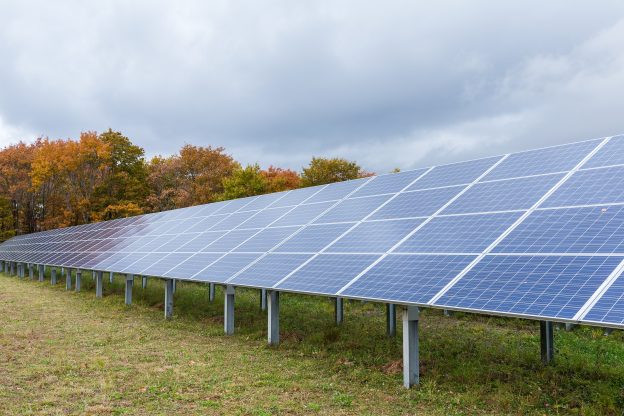
Foreign media outlets have reported that 15 companies working in the solar PV industry are planning to collectively invest US$3 billion to build production facilities in India. These companies include wafer manufacturer 1366 Technologies and PV module manufacturer First Solar, both of which are based in the US. An anonymous source inside the Indian government revealed that the proposed investment plan involves 10GW of production capacity for wafers, 20GW of production capacity for PV cells, and 20GW of production capacity for PV modules.
According to the source inside the government, the other companies that are interested in participating in this investment plan include Acme Solar, Vikram Solar, ReNew Power, and Adani Solar.
The initiatives from the Indian government are believed to be responsible for attracting more foreign investments in the country’s solar PV industry. A few years ago, the government of Narendra Modi launched “Make in India” — a campaign to expand domestic manufacturing and open new sectors to foreign capital.
To promote domestic manufacturing of electronic products, the country’s Ministry of Electronics and Information Technology announced this June that it will disburse 50 billion rupees to successful applicants in various industries. The money will be distributed through several grant programs such as Production-Linked Incentive Scheme (PLI), Scheme for Promotion of Manufacturing of Electronic Components and Semiconductors (SPECS), and Modified Electronics Manufacturing Clusters Scheme (EMC 2.0). The government is hoping that its incentives will be tempting enough to get foreign technology companies to come to the country to build factories, engage in R&D, and eventually transfer their technologies to domestic manufacturers.
The proposed plan by foreign companies to invest US$3 billion in the local solar PV industry emerged after the announcement of PLI. This program will provide financial incentives that are worth 1.97 trillion rupees to 10 manufacturing sectors, including PV modules.
At the same time, the Indian government continues to raise trade barriers as another way of supporting domestic industries. In particular, the government is considering levying a basic customs duty of 40% on imported PV modules and 25% on imported PV cells starting April 2022.
India is aiming to reach an installed capacity of 175GW for renewables by 2022. By widening the adoption of renewables, the Indian government hopes to achieve the following: a reduction in the cost of electricity for most end-users in the country, a reduction in energy imports, a reduction in the CO2 emission from domestic power generation, and a boost for domestic manufacturing.
Currently, much of India’s demand for PV products is still met by imports from China. Recent industry studies find that PV products from China has a market share of around 80% in India. The total value of PV products imported to India has come to US$2.16 billion. Out of that amount, products from China account for about US$1.69 billion.
India’s solar PV industry now has a production capacity of just 2GW for PV cells and 10GW for PV modules. Ingots and wafers, which are the building blocks of standard PV products, are mainly supplied by Chinese companies. In order to realize its ambitions in the development of renewables and domestic industries, India has to establish a presence in the upstream sections of the supply chain and thereby reduce its reliance on Chinese imports.
With the aim of protecting the domestic solar PV industry, the Indian government imposed a tariff rate of 25% on PV products shipped from China and Malaysia at the end of July 2018. The rate stepped down to 20% after a year and dropped again to 15% at the end of this July.
Raj Kumar Singh, who serves as India’s Minister of State for Power and New and Renewable Energy, told media outlets that the signing of the letter of intent by solar companies for setting up 20GW each for cell and module production occurred just as the plan to levy basic customs duties on PV imports was announced. Also, Prime Minister Modi has stated that India must develop its own manufacturing for PV modules and energy storage batteries in order to fully take advantage of its abundant solar resource.
(Photo credit: The US Bureau of Land Management via Flickr CC BY 2.0.)






